Comparative immunogenicity of an mRNA/LNP and a DNA vaccine targeting HIV gag conserved elements in macaques
- PMID: 35935984
- PMCID: PMC9355630
- DOI: 10.3389/fimmu.2022.945706
Comparative immunogenicity of an mRNA/LNP and a DNA vaccine targeting HIV gag conserved elements in macaques
Abstract
Immunogenicity of HIV-1 mRNA vaccine regimens was analyzed in a non-human primate animal model. Rhesus macaques immunized with mRNA in lipid nanoparticle (mRNA/LNP) formulation expressing HIV-1 Gag and Gag conserved regions (CE) as immunogens developed robust, durable antibody responses but low adaptive T-cell responses. Augmentation of the dose resulted in modest increases in vaccine-induced cellular immunity, with no difference in humoral responses. The gag mRNA/lipid nanoparticle (LNP) vaccine provided suboptimal priming of T cell responses for a heterologous DNA booster vaccination regimen. In contrast, a single immunization with gag mRNA/LNP efficiently boosted both humoral and cellular responses in macaques previously primed by a gag DNA-based vaccine. These anamnestic cellular responses were mediated by activated CD8+ T cells with a phenotype of differentiated T-bet+ cytotoxic memory T lymphocytes. The heterologous prime/boost regimens combining DNA and mRNA/LNP vaccine modalities maximized vaccine-induced cellular and humoral immune responses. Analysis of cytokine responses revealed a transient systemic signature characterized by the release of type I interferon, IL-15 and IFN-related chemokines. The pro-inflammatory status induced by the mRNA/LNP vaccine was also characterized by IL-23 and IL-6, concomitant with the release of IL-17 family of cytokines. Overall, the strong boost of cellular and humoral immunity induced by the mRNA/LNP vaccine suggests that it could be useful as a prophylactic vaccine in heterologous prime/boost modality and in immune therapeutic interventions against HIV infection or other chronic human diseases.
Keywords: HIV; T cell response; antibody; conserved sequences; gag; immune focusing; mRNA/LNP; therapeutic immunization.
Copyright © 2022 Valentin, Bergamaschi, Rosati, Angel, Burns, Agarwal, Gergen, Petsch, Oostvogels, Loeliger, Chew, Deeks, Mullins, Pavlakis and Felber.
Conflict of interest statement
Authors JM, GP, BP and BF report issued patents of relevance to this work. Author MAn was employed by Leidos Biomedical Research, Inc. Authors JG, BP, LO, EL are employed by CureVac AG. The remaining authors declare that the research was conducted in the absence of any commercial or financial relationships that could be construed as a potential conflict of interest.
Figures
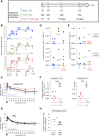
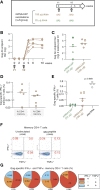
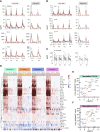
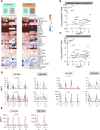

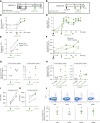
Similar articles
-
DNA Prime-Boost Vaccine Regimen To Increase Breadth, Magnitude, and Cytotoxicity of the Cellular Immune Responses to Subdominant Gag Epitopes of Simian Immunodeficiency Virus and HIV.J Immunol. 2016 Nov 15;197(10):3999-4013. doi: 10.4049/jimmunol.1600697. Epub 2016 Oct 12. J Immunol. 2016. PMID: 27733554 Free PMC article.
-
Priming with a Potent HIV-1 DNA Vaccine Frames the Quality of Immune Responses prior to a Poxvirus and Protein Boost.J Virol. 2019 Jan 17;93(3):e01529-18. doi: 10.1128/JVI.01529-18. Print 2019 Feb 1. J Virol. 2019. PMID: 30429343 Free PMC article.
-
Gag and env conserved element CE DNA vaccines elicit broad cytotoxic T cell responses targeting subdominant epitopes of HIV and SIV Able to recognize virus-infected cells in macaques.Hum Vaccin Immunother. 2018;14(9):2163-2177. doi: 10.1080/21645515.2018.1489949. Epub 2018 Jul 12. Hum Vaccin Immunother. 2018. PMID: 29939820 Free PMC article.
-
Development of a DNA-MVA/HIVA vaccine for Kenya.Vaccine. 2002 May 6;20(15):1995-8. doi: 10.1016/s0264-410x(02)00085-3. Vaccine. 2002. PMID: 11983261 Review.
-
Innate immune mechanisms of mRNA vaccines.Immunity. 2022 Nov 8;55(11):1993-2005. doi: 10.1016/j.immuni.2022.10.014. Immunity. 2022. PMID: 36351374 Free PMC article. Review.
Cited by
-
Immunogenicity and innate immunity to high-dose and repeated vaccination of modified mRNA versus unmodified mRNA.Mol Ther Nucleic Acids. 2025 Jun 9;36(3):102588. doi: 10.1016/j.omtn.2025.102588. eCollection 2025 Sep 9. Mol Ther Nucleic Acids. 2025. PMID: 40612710 Free PMC article.
-
The role of mRNA-galsomes and LNPs in enhancing HIV-specific T cell responses across various lymphoid organs.Mol Ther Nucleic Acids. 2024 Oct 28;35(4):102372. doi: 10.1016/j.omtn.2024.102372. eCollection 2024 Dec 10. Mol Ther Nucleic Acids. 2024. PMID: 39618822 Free PMC article.
-
mRNA vaccines: a new opportunity for malaria, tuberculosis and HIV.Front Immunol. 2023 Apr 24;14:1172691. doi: 10.3389/fimmu.2023.1172691. eCollection 2023. Front Immunol. 2023. PMID: 37168860 Free PMC article. Review.
-
mRNA vaccines: A novel weapon to control infectious diseases.Front Microbiol. 2022 Oct 4;13:1008684. doi: 10.3389/fmicb.2022.1008684. eCollection 2022. Front Microbiol. 2022. PMID: 36267192 Free PMC article. Review.
-
Exploring HIV Vaccine Progress in the Pre-Clinical and Clinical Setting: From History to Future Prospects.Viruses. 2024 Feb 27;16(3):368. doi: 10.3390/v16030368. Viruses. 2024. PMID: 38543734 Free PMC article. Review.
References
Publication types
MeSH terms
Substances
Grants and funding
LinkOut - more resources
Full Text Sources
Medical
Research Materials

